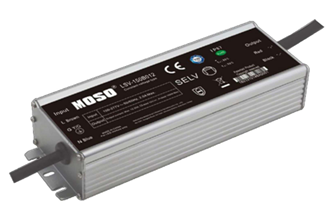As portable battery-powered devices work longer and longer, Class D amplifiers are gaining more and more attention due to their inherent efficiency advantages. Today, most Class D systems are more than 80% efficient. In the past, developers had to sacrifice audio performance and increase board space and system cost to improve efficiency. Fortunately, the latest Class D technology has overcome the shortcomings of these architectures while simplifying system design and reducing the cost of the solution.
This article refers to the address: http://
Common problems for Class D amplifiers include: filter size, electromagnetic interference (EMI), radio frequency interference (RFI), and poor total harmonic distortion + noise (THD+N). The new architecture uses the inductive nature of the speaker itself to extract the audio components from the PWM square wave output, eliminating the need for an output filter for the audio, but the topology after removing the filter causes more electromagnetic interference. The newly developed devices minimize EMI and improve THD+N performance without sacrificing efficiency.
EMI is important to designers who can interfere with IC devices and other electronic devices within the system. In addition, engineers face a daunting challenge to comply with EMI restrictions such as FCC, CE, Mil-Std-461 and automotive system-specific standards. The first EMI suppression function promoted by semiconductor suppliers is spread spectrum modulation. Spread spectrum modulation differs from traditional pulse width modulation (PWM) in that the switching frequency of the output bridge only changes within the frequency band near the center frequency. Although each device has different center frequency, frequency spread, and frequency variation methods, the peak radiant energy can be reduced as long as the frequency changes are random. This is because the electromagnetic energy tends to spread over a wide frequency band, so the total high frequency energy remains the same as a fixed frequency device, but the noise at any point in the frequency band can be reduced. Figure 1 compares the near-field EMI measurements of a fixed-frequency device and a spread-spectrum device. As the red line in the figure indicates, the peak energy is reduced. If the method is implemented correctly, the spread spectrum can be a very effective solution because it does not have any adverse effects on efficiency and THD. This technology is now used on devices such as the LM4675, LM48410, and LM48520.
Figure 1. Near-field EMI measurements for a Class D system. The difference between the left fixed frequency clock scheme and the right spread spectrum modulation can be seen from the red dashed line.
To further reduce EMI emissions from devices, semiconductor manufacturers have introduced edge rate control (ERC). The high frequency energy of the Class D output is included at the edge of the square wave output. The faster the rise and fall times of the output, the more high frequency energy the edge contains. Therefore, if the output transition time can be reduced, then the high frequency energy emitted by the system can be reduced.
However, reducing the transition time may also have a negative impact on the performance of the Class D amplifier. As the time spent in the active area between states is longer, the output device dissipates more power, thereby reducing efficiency. In addition, shorter rise and fall times can also cause the PWM signal to deviate from the perfect square wave, causing errors in the regenerated audio signal and increasing THD+N.
Figure 2. The EMI test results for the LM48310 meet FCC Class B limits.
Although edge rate control may pose a threat to the performance of Class D amplifiers, its performance in reducing EMI has left designers eager to stop, thus enabling ERC technology to continue to improve. As long as the method is implemented correctly, the loss of efficiency and the adverse effects of increasing THD+N can be minimized. A good example of this is the LM48310 (mono) and LM48411 (multichannel) Class D amplifiers from National Semiconductor Corporation (NSC).
Both devices use the National Semiconductor patented Enhanced Radiation Suppression (E2S) system. The E2S system improves efficiency by slowing down part of the edge output transition time. With this approach, not only EMI can be minimized, but even power consumption can be reduced to non-ERC Class D amplifier levels. As for the PWM audio signal error caused by ERC, it can be corrected by the internal feedback loop to reduce THD+N and improve audio quality.
Figure 3. Spread spectrum Class D amplifier without edge rate control. In the EMI test, the device was driven with a 20-inch long speaker cable without any filters, and the results met the FCC Class B EMI limits.
Figure 2 shows the EMI performance of the LM48310. The LM48310 passed the FCC Class B standard without any filtering and used a 12-inch unshielded twisted pair cable to drive a speaker. Figure 3 shows the results of a pure spread spectrum device in the same test. As shown in the figure, National's E2S Class D amplifiers achieve extremely low EMI levels while maintaining superior audio performance.
Figure 4. Screen print of the LM48310 demonstration board.
Recent developments in Class D technology have significantly reduced EMI emissions from Class D amplifiers, but as far as radio frequency (RF) interference is concerned, proper printed circuit board design can also significantly reduce emissions. Undoubtedly, this is a vast subject, and related articles are more like the number of Ganges sands, but it is still worth discussing the basic methods of reducing noise and EMI. First, the traces with the switching signals are isolated, which effectively reduces the noise coupled to the sensitive parts of the circuit. This approach not only enhances audio performance, but also minimizes the chances of creating parasitic antennas. In addition, analog inputs, analog power supplies (powered to input buffers, control, and other sensitive circuits) and their associated bypass capacitors need to be isolated from the switch node, including device output, output bridge power, and any associated with these nodes. External components.
Figure 5. Top layer of the LM48310 demonstration board.
However, many Class D amplifiers have multiple power supplies and grounds, one for low noise and input circuits, and the other for larger current and noisy output stages. If the potential difference between individual power supplies and ground is too large, the device will not operate properly. However, when the device is operating in the noise and quiet areas of an isolated printed circuit board, it is a daunting task to ensure that the device maintains a normal potential difference. Figure 6 shows how to maintain a uniform potential for the device while isolating the signal from the power ground. Since all individual ground nodes are connected to the same cupper pour, the layout is similar to the star ground connection, keeping the ground potential at these points consistent. However, the noisy ground is separated from the noise-free ground itself and will only be connected when grounded into the board. This method prevents noise pollution from noise generated by the device. The same principle shown in Figure 7 is applied to the VDD layer. The left half of the board includes analog audio inputs, VDD, and input coupling capacitors C1 and C2. The right half of the board includes the output, PVDD (H bridge supply) and bypass capacitor C3.
Figure 6. Ground plane for the LM48310 demonstration board.
The VDD and ground planes are only connected when the power or ground enters the board. From this point, the two levels will be separated, and the quiet nodes will continue to be isolated from the switch nodes. This technology effectively prevents switching noise from entering the quiet zone, so as not to affect performance or increase EMI.
Figure 7. Vdd layer of the LM48310 demonstration board.
Based on its high efficiency, Class D amplifiers have become the best choice for audio amplifiers in portable and power responsive applications. In terms of improvements in audio quality and EMI performance, the use of Class D amplifiers makes design work easier. Furthermore, looser PCB layout technology and fewer external components can shorten the design cycle, reduce system size and cost, and extend the battery life of portable products without affecting sound quality.
Universal input voltage 90~305Vac; Constant voltage design; Active power factor correction; High power factor > 0.96; Multiple protection: SCP, OVP, OTP, OLP; Surge protection: 35W/50W: line-line 4KV, line-earth 6KV 75~320W: Line-line 5KV, line-earth 10KV; Degrees of protection: IP67; Ambient temperature: -40℃~+60℃; 5 years warranty.
The wattage: 35W/50W/75W/100W/150W/200W/320W.
The output voltage: 12V/24V/36V/48V.

The LED power supply got global safety certifications, including UL, CE, TUV, CB, SAA etc. The LED control gear has universal input voltage, from 90~305Vac. It is a reliable product compatible with various landscape application and different countries.
Due to the high IP rating, the LED driver can be used for dry, damp, wet
locations. It is suitable for installing outside of the fixture. The
perfect cooling design can ensure the product reliability and long lifetime for
at least 10 years (50,000hours operation at least) minimum.

Constant Voltage LED Driver
Constant Voltage LED Driver,Constant Voltage Driver,12V LED Driver,24V LED Driver
Moso Electronics , http://www.mosoleddriver.com